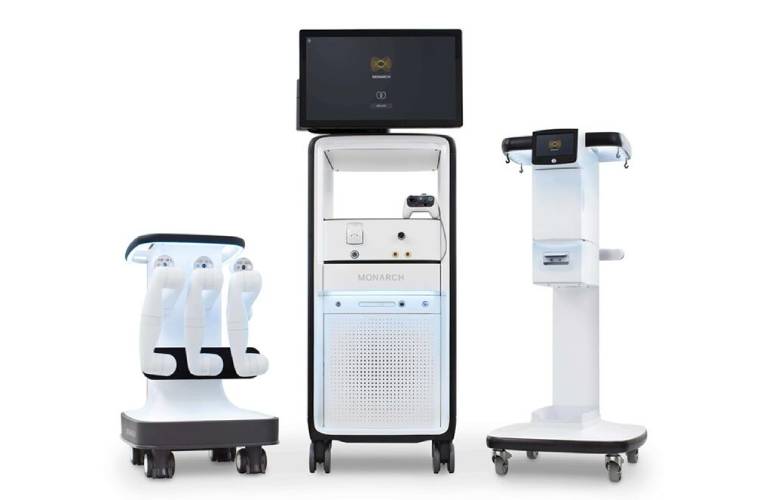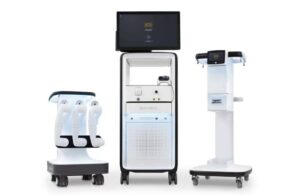Cybersecurity firm Rapid7 warns that organisations worldwide are entering a period of escalating cyber risk, driven by advances in artificial intelligence, quantum computing, and geopolitical tension. Compiled by Senior Threat Intelligence Researcher Jeremy Makowski, the report outlines how emerging technologies are fuelling a new era of cyber warfare - one where AI serves as both

Johnson & Johnson MedTech advances surgical robotics with Nvidia AI, plans 2026 launch
Home » Johnson & Johnson MedTech advances surgical robotics with Nvidia AI, plans 2026 launch

Johnson & Johnson MedTech (NYSE: JNJ) today announced new advances in surgical robotic technology with physical AI capabilities.
The medtech giant says its advances create simulated environments to accelerate future product innovation, optimize clinical workflows and improve training for clinical teams.
J&J MedTech — one of the largest medical device companies in the world — said it applied the AI-driven simulation in the development of its Monarch surgical robotic platform for urology.
The company said its urology robot platform is the latest innovation for robotic-assisted urologic procedures. It plans to launch it in the U.S. in 2026.
With this, virtual operating room environments can assist clinical teams in setting up the robotic system before starting a procedure. Simulated patient anatomy and clinical scenarios can also model kidney stone procedures to help with learning and planning.
(MDO’s Medtech Big 100 Special Report takes a deep look at the world’s 100 largest medical device companies, including J&J. Visit here for a free download.)
Leveraging Nvidia Isaac, J&J MedTech can create high-fidelity digital twins using Nvidia Omniverse libraries. It can also build applications that simulate how the system may perform in the OR and inside a patient. Nvidia’s Cosmos world foundation models for synthetic data generation can also help complete the picture with accurate, physics-based data.
This development comes more than a year and a half after J&J first announced plans to accelerate and scale AI for surgery in partnership with Nvidia. The two companies paired up to support increased access to real-time analysis and global AI algorithm availability. They hope to affect surgical decision-making, education and collaboration across the connected OR.
“Simulation is the next frontier in surgical robotics,” said Neda Cvijetic, SVP, global head of Robotics & Digital R&D, Johnson & Johnson MedTech. “With AI-driven simulation, we can create high-fidelity digital twins that adhere to the laws of physics, such that the simulation accurately anticipates the real world and ultimately unlocks physical AI capabilities. As we launch new robotics technologies and continue accelerating our innovation pipeline, these simulations have the potential to enhance our differentiated technology development in support of our mission to deliver better patient outcomes.”
More on the Johnson & Johnson MedTech and Nvidia partnership
Monarch is the first robotic-assisted bronchoscopy system to market. It offers minimally invasive access to and visualization of airways and helps clinicians biopsy suspicious lung nodules. The platform helps deliver early, definitive diagnoses in lung cancer cases to get patients on the treatment pathway faster.
J&J MedTech also recently introduced its Monarch Quest technology that features AI-powered algorithms backed by Nvidia.
Now, creating physics-based simulations of the entire robotic system could provide R&D teams with the potential to test new features and model how the system might behave in real-world settings. The simulations extend to the platform’s tower, cart, fluid management system and instruments.
These digital assets can support training and education for teams that adopt Monarch for urology. Monarch, with its ureteroscope and endourology accessories, provides endoscopic visualization and access of organs, cavities and canals in the urinary tract with transurethral access or transurethral access in conjunction with percutaneous access routes.
J&J MedTech says its system can also work in conjunction with endoscopic accessories for various urinary tract procedures. Robotic assistance can help surgeons maintain precise instrument control during kidney stone procedures. This provides the freedom to perform multiple tasks simultaneously by a single operator.
“This is an exciting development in our use of AI to shape our robotics portfolio and position the Monarch platform for urology for success,” said Aleksandra Popovic, president, Monarch, Johnson & Johnson MedTech. “Our teams are convening the right technologies to capture value from data and shape new experiences with our systems before, during, and after surgery.”
About Sean Whooley
Sean Whooley is a senior editor who mainly produces work for MassDevice, Medical Design & Outsourcing and Drug Delivery Business News. He received a bachelor’s degree in multiplatform journalism from the University of Maryland, College Park. You can connect with him on LinkedIn or email him at [email protected].



